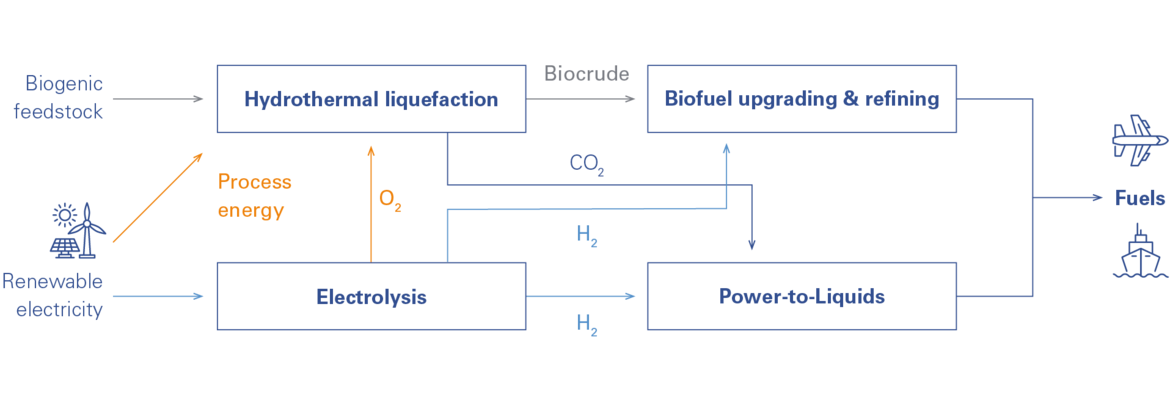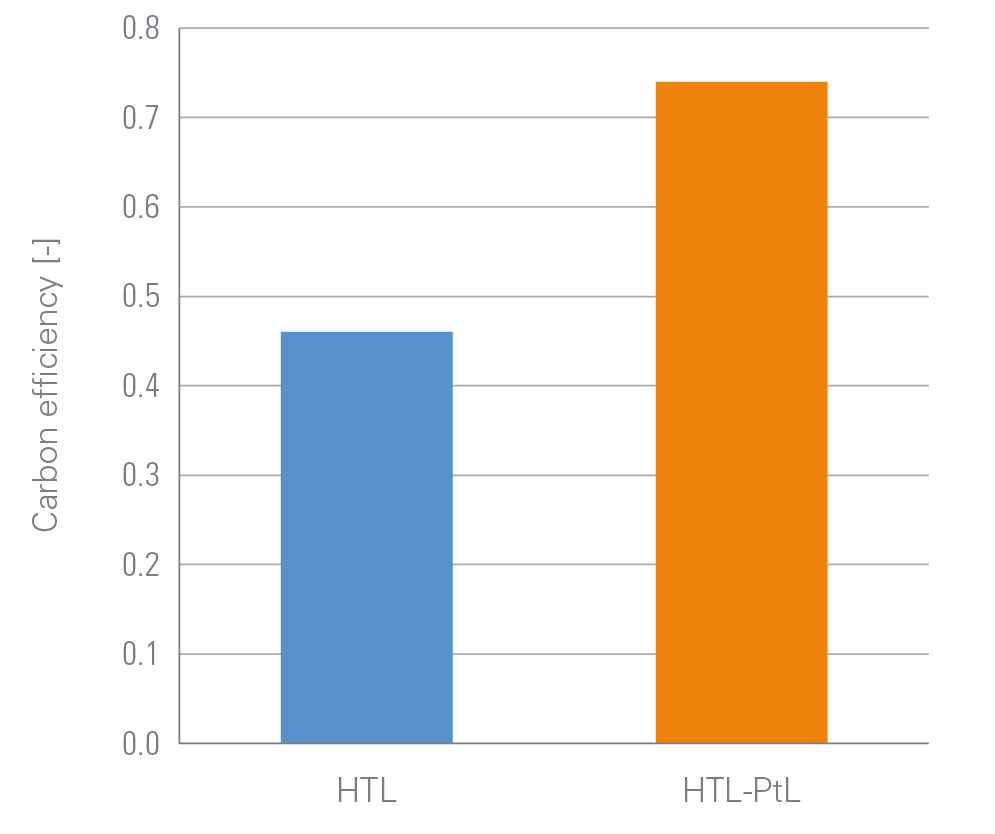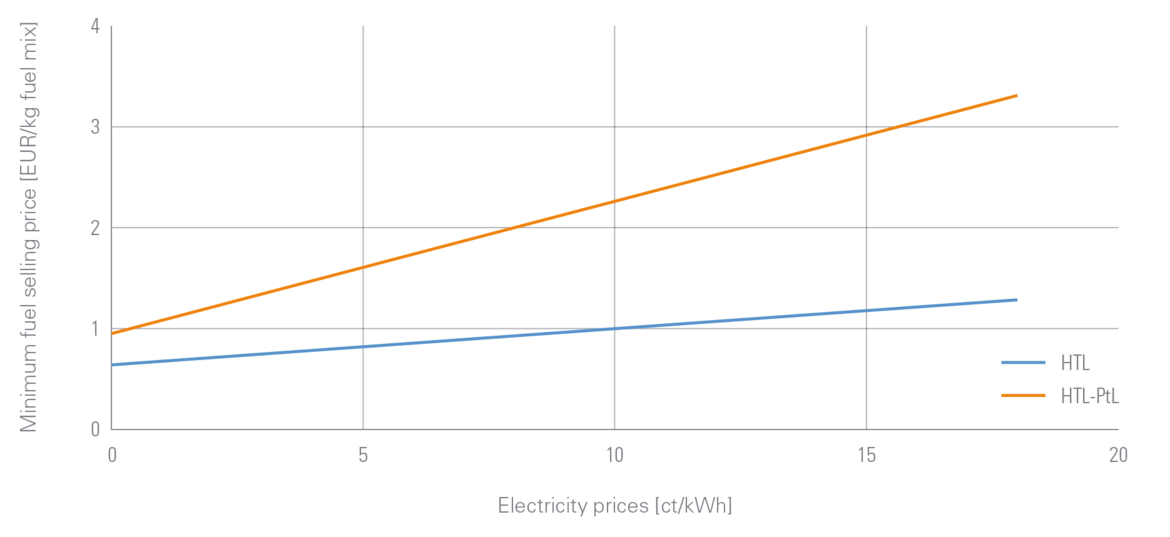The production of synthetic fuels via the Power-to-Liquid (PtL) process raises the question of carbon availability in the required quantities; this should potentially be ensured by capturing CO2 from ambient air. On the other hand, the production of biogenic kerosene requires significant amounts of hydrogen. Depending on the biofuel production process, CO2 is also produced as a by-product. A simple coupling option is the substitution of conventional hydrogen, which is required for treatment processes in biorefineries, with sustainably produced hydrogen. More profound synergies arise for production processes in which renewable heat, the oxygen released during electrolysis, or carbon streams resulting from biomass conversion are used for kerosene production.

improved through integration with PtX concepts.
A typical example are so-called PBtL processes, in which the electrolysis products hydrogen and oxygen are used to make biomass gasification processes (BtL = Biomass-to-Liquid) more efficient. At Bauhaus Luftfahrt, the integration potential of hydrothermal liquefaction (HTL) of biomass with a PtL process is being investigated.
The results show that the carbon balance of the HTL process is significantly improved, as evolving CO2 streams are utilised via the PtL process, thereby increasing the product yield per unit of biomass. However, depending on the cost of renewable electricity used, fuel production costs may increase significantly. Thus, coupling advanced biomass conversion processes with green H2 is particularly suitable for sites that have both high biomass availability and good conditions for renewable electricity production.



